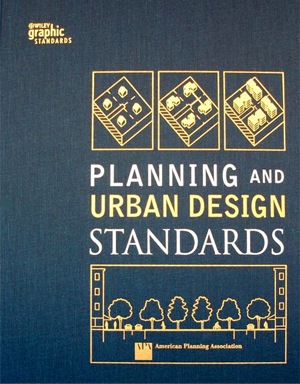Published Work
Published in Periodicals and Authored Books
- "Sustainable Greenway Tourism: A Comparison of the East Coast Greenway and the Prague to Vienna Greenway." Fabos Conference on Landscape and Greenway Planning, 2010, Budapest, Hungary, July 2010, pp 526-534, July 2010
- "Closing the Gaps" American Trails magazine, Volume 37, No. 3, October 2008, pp 14-16
- "Miami River Greenway" Landscape Architecture China Magazine, Volume 3, 2009, pp 20-25
- "Bicycle Circulation and Recreational Trails and Shared Use Paths," Landscape Architecture and Graphic Standards published by John Wiley & Sons, Inc. 2007, pp 259-265
- "Greenways and Trails," Planning and Urban Design Standards, published by John Wiley & Sons, Inc. 2006, pp 372-375
- "Greenways as Green Infrastructure for a New Millennium," Handbook of Water Sensitive Planning and Design, Harvard University, published by Lewis Publishers/CRC Press 2002, pp 395-405
- Flink, Charles A., et. al., Trails For the Twenty First Century, Edited by The Rails-to-Trails Conservancy; Published by Island Press, March 2001.
- Flink, Charles A., and Robert M. Searns, Greenways. A Guide to Planning, Design and Development, Edited by The Conservation Fund, Washington, DC; Published by Island Press, September 1993.
- Flink, Charles A., ”Greenways: Recreation Resource versus Land Use Ethic” Selected Paper for Conference Proceedings, Third Biennial International Linear Parks Conference, Asheville, North Carolina September 1989
- Flink, Charles A., and David Swanson, ”Open Space Planning: A Case Study of Durham County, North Carolina,” Carolina Planning, Vol. 15, No. 1, pp. 9-12, Spring 1989
Featured in Magazine, Periodical and Publication Articles
- "Linear Landscapes" LA China Magazine, Volume 4, 2009, pp 70-77
- "Think Like Flink" Landscape Architecture Magazine, Volume 98, Number 5, pp 88-97, May 2008 (Shared Wisdom)
- "Passion Pays",Landscape Architecture Magazine, Volume 89, Number 7, pp 130-131, July 1999 (Shared Wisdom)
- "Turning Trash Into Trails - The Story of the Swift Creek Recycled Greenway", TRENDS 75th Anniversary Edition, Trails, Greenway and Pedestrian Corridors, Volume 33, Number 2, pp. 29-37, 1996
- “Everything Old is New Again As Greenway Puts Recyclables to Use, “ American City and County magazine, Vol. 107, No. 13, December 1992 (Featured in article, pp. 14)
- “Saving Land One Piece at a Time,” Good Housekeeping magazine, Vol. 214, No. 5, May 1992. (Featured in article, pp 164)
- “Small Firms/New Faces”, Landscape Architecture Magazine , Vol. 81, No 5, pp 56-57, May 1991. (Featured in article, p. 57)
- “Greenways: Paths to the Future”, National Geographic magazine, Vol. 177, No. 6, pp 76-79, June 1990. (Photo and quote page 83)
- Charles E. Little, Greenways for America , The Johns Hopkins University Press, September 1990, pp 199-203. (Chapter 11, The Greenway Imperative)
- “Happy Trails for You,” North Carolina State University Alumni Magazine, March 1989, (Feature on pp 20 , recognition as Chair of American Trails)
Trails for the Twenty-First Century: Planning, Design, and Management Manual for Multi-use Trails; By Charles A. Flink, Robert M. Searns, and Kristine Olka
Book Description : Communities across the country are working to convert unused railway and canal corridors into trails for pedestrians, cyclists, horseback riders, and others, serving the needs of both recreationists and commuters alike. These multi-use trails can play a key role in improving livability, as they offer an innovative means of addressing sprawl, revitalizing urban areas, and reusing degraded lands. Trails for the Twenty-First Century is a step-by-step guide to all aspects of the planning, design, and management of multi-use trails. Originally published in 1993, this completely revised and updated edition offers a wealth of new information including discussions of recent regulations and federal programs, recently revised design standards from AASHTO, and current research on topics ranging from trail surfacing to conflict resolution information about designing and building trails in brownfields and other environmentally troubled landscapes.
Also included is a new introduction that describes the importance of rail-trails to the sustainable communities movement, and an expanded discussion of maintenance costs. Enhanced with a wealth of illustrations, Trails for the Twenty-First Century provides detailed guidance on topics such as: taking a physical inventory and assessment of a site; involving the public and meeting the needs of adjacent landowners; understanding and complying with existing legislation; designing, managing, and promoting a trail; and where to go for more information. It is the only comprehensive guidebook available for planners, landscape architects, local officials, and community activists interested in creating a multi-use trail.
Purchase Trails for the Twenty-First Century from Island Press.
Greenways: A Guide to Planning, Design, and Development By Charles A. Flink and Robert M. Searns
Book Description : This book provides professionals and citizen activists with the tools they need for developing a greenway plan. Topics covered include: the physical development of a greenway organizing community resources forging partnerships among public agencies, private groups, citizens, and businesses principles of ecological design, including wetland restoration, water quality, and wildlife issues The book offers general guidance for the overall process along with specific detail for each step along the way. It is an invaluable source of information for professional and volunteer planners, with the recommendations, guidelines, warnings, and support needed for successful greenway development.




